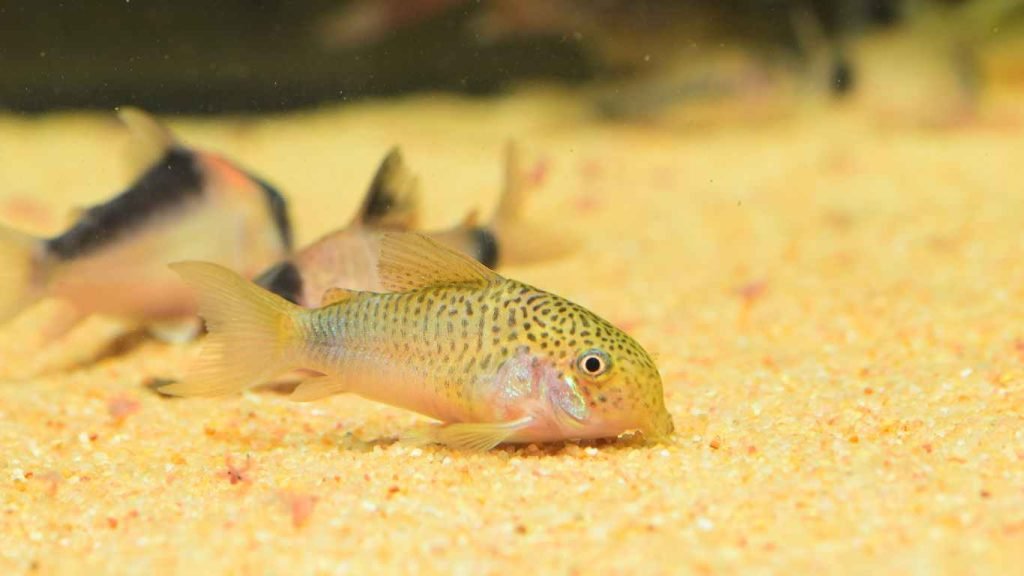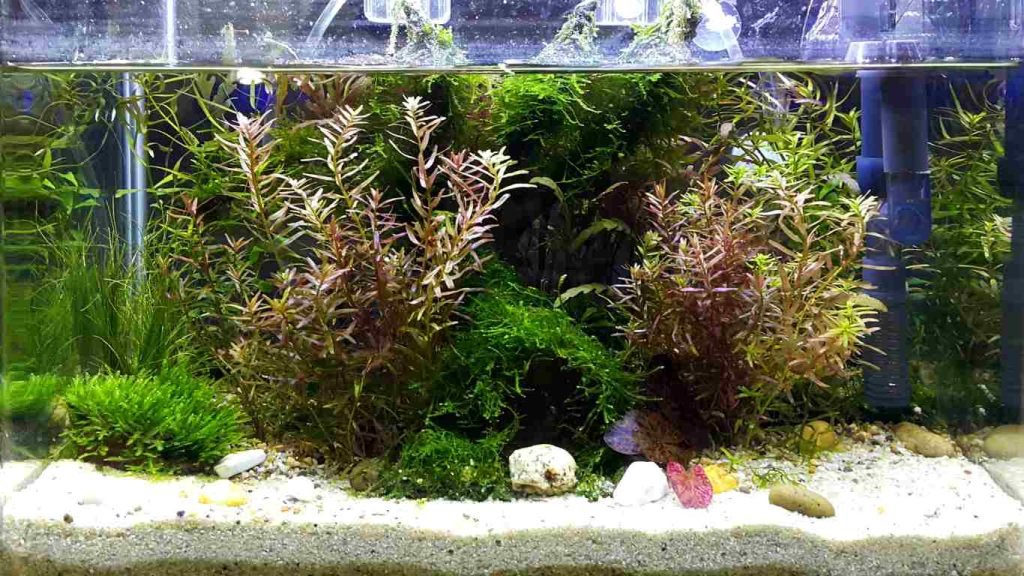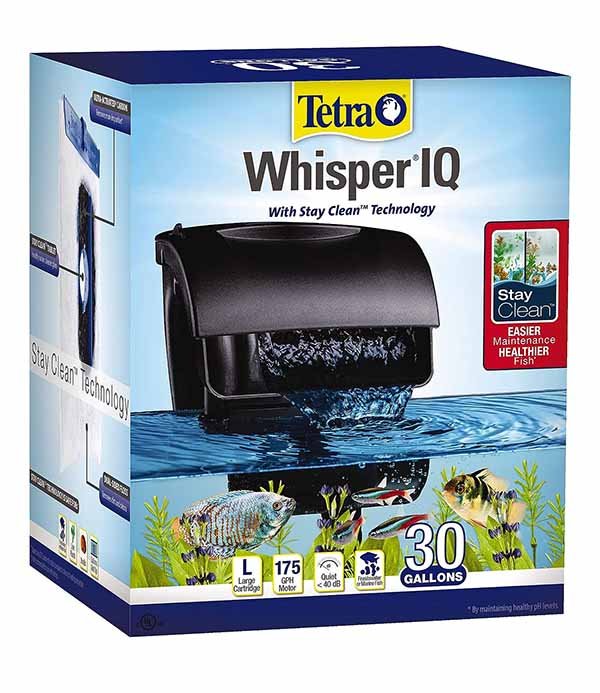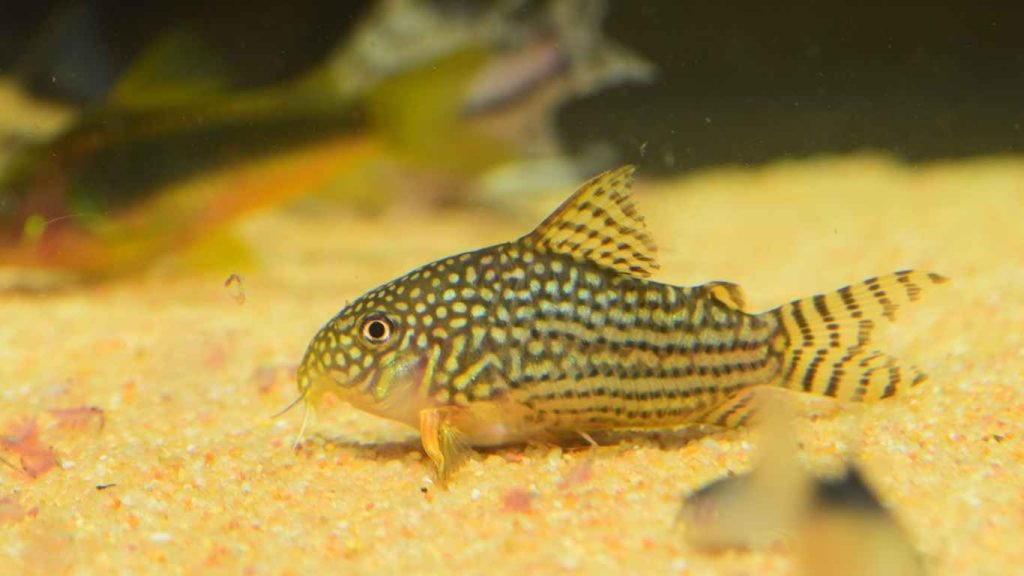Welcome to our comprehensive breeding guide for Corydoras catfish! If you’re interested in successfully breeding these fascinating aquatic creatures, you’ve come to the right place. Whether you’re a beginner or an experienced fish keeper, this guide will provide you with all the information you need to breed Corydoras successfully.
How to Breed Corydoras- Core Insights:
Choosing the Right Corydoras Species
When it comes to breeding Corydoras catfish, selecting the right species is crucial for success. With over 150 species available, it can be overwhelming to choose. However, there are several popular choices known for their ease of breeding and compatibility in a home aquarium.
Some of the recommended Corydoras species for breeding include:
- Peppered corys
- Bronze corydoras
- Panda corys
- Julii corys
- Albino corys
- Sterbai cories
- Habrosus cories
These species share similar requirements and exhibit favorable breeding behaviors. By choosing any of these species, you increase your chances of successfully breeding Corydoras catfish.
Each species may have its unique characteristics and appearance, so research and choose the ones that appeal to you most. It’s important to note that while the selected species are known for their ease of breeding, success may vary depending on various factors like water conditions, health of the fish, and proper care.
“By selecting the right Corydoras species, you set the foundation for a successful breeding journey.”
Now that you have chosen the right Corydoras species, the next step is to purchase the fish and prepare them for breeding.

Purchasing the Fish
When it comes to breeding corydoras catfish, selecting the right fish for your breeding project is crucial. Purchasing a diverse and healthy group of corydoras fish is the first step towards successful breeding.
It is highly recommended to buy a group of at least five corydoras fish to increase the chances of obtaining both male and female individuals. This is important because corydoras catfish exhibit sexual dimorphism, which means the males and females have distinct physical characteristics.
To ensure that the corydoras fish you purchase are suitable for breeding, observe their behavior closely. Healthy and sexually mature corydoras fish will display normal swimming patterns and group together. Look for individuals that stay in close proximity to each other, indicating a strong social bond within the group.
Tip: When purchasing corydoras fish, inquire about the water parameters they are accustomed to. This information can help you match their current environment to ensure a smooth transition into your breeding setup.
Choosing the Right Corydoras Species
When selecting corydoras fish for breeding, it is essential to consider the specific species. Different corydoras species require similar environmental conditions and exhibit comparable breeding behavior, making them ideal candidates for breeding projects.
| Corydoras Species | Common Name |
|---|---|
| Coridoras paleatus | Peppered Cory |
| Corydoras aeneus | Bronze Corydoras |
| Corydoras panda | Panda Cory |
| Corydoras julii | Julii Cory |
| Corydoras paleatus var. albino | Albino Cory |
| Corydoras sterbai | Sterbai Cory |
| Corydoras habrosus | Habrosus Cory |
Table: Common Corydoras species suitable for breeding projects.

These species are popular choices among breeders due to their availability, hardiness, and willingness to breed in captivity. By choosing one of these species, you can increase your chances of successful breeding and enjoy the rewarding experience of raising corydoras fry.
Sexing and Conditioning the Fish
Once your Corydoras catfish are sexually mature, you can start sexing them to determine their gender. Females will appear longer, wider, and slightly taller compared to males, who are more streamlined and smaller in size.
To maximize your breeding success, it is recommended to form breeding groups consisting of one female and two males. This balanced ratio ensures healthier breeding dynamics among the fish.
Conditioning your Corydoras fish plays a crucial role in stimulating their breeding behavior. One way to do this is by providing them with high-protein live foods. Live foods such as bloodworms, brine shrimp, and daphnia can help enhance their reproductive health and encourage spawning.
Tips for Sexing Corydoras Catfish
When sexing your Corydoras catfish, keep the following characteristics in mind:
- Female Corydoras: Longer, wider, and slightly taller
- Male Corydoras: More streamlined and smaller in size

Conditioning Corydoras Fish for Breeding
To condition your Corydoras fish for breeding, follow these steps:
- Provide live foods with high protein content
- Include bloodworms, brine shrimp, and daphnia in their diet
- Feed them a variety of nutritious foods to enhance reproductive health
It’s important to note that sexing Corydoras catfish can be challenging when they are juveniles. Wait until they are sexually mature for accurate gender identification.
Setting Up the Breeding Tank
When breeding corydoras catfish, it is essential to provide them with a dedicated breeding tank that meets their specific requirements. A well-designed tank will create a suitable environment for the fish to breed and ensure the successful development of their eggs and fry.
Choosing the Right Tank Size and Substrate
A breeding tank for corydoras should be spacious enough to accommodate a group of fish comfortably. A tank with a capacity of around 20 gallons is recommended, as it provides ample space for the fish to move and breed.

For the substrate, opt for a sandy bottom or bare bottom tank. Corydoras often engage in substrate sifting behavior, and sand or bare bottom provides a safe and natural substrate for them to explore and lay their eggs.
Providing Suitable Spawning Sites
In order to encourage breeding behavior, it is crucial to provide the corydoras with suitable spawning sites in the tank. Adding live plants, such as Java moss or Anubias, or spawning mops will give the fish a place to deposit their eggs. These plants or mops mimic the natural vegetation found in their natural habitats and provide a safe haven for egg-laying.
Spawning mops can be easily made by attaching a cluster of synthetic or natural fibers to a floating object in the tank, creating a suitable spawning site for the fish. The corydoras will lay their eggs either directly on the plants or mops, or they may choose to scatter their eggs across the tank.
Ensuring Proper Filtration and Oxygenation
A small filter or sponge filter is recommended for the breeding tank. It will help maintain water quality by removing excess waste and providing water circulation. The filter should have a gentle flow to avoid disturbing the eggs or the resting fish.
Proper oxygenation is vital for the health and development of the eggs. A small air pump or a gentle water flow from the filter will ensure a sufficient supply of oxygen in the tank.

Tetra Whisper IQ Power Filter, Stay Clean Technology
Creating an Ideal Environment
Maintaining stable water parameters is crucial for the overall well-being of corydoras and successful breeding. Keep the water temperature in the range of 75-80°F (24-27°C) and maintain a pH level around neutral (6.5-7.5).
Regular water changes should be performed to keep the water clean and prevent the buildup of toxins. Aim for a water change of 25% every week to maintain optimal water quality.
Essential Considerations for Breeding Tank Setup
| Aspect | Consideration |
|---|---|
| Tank Size | Around 20 gallons capacity |
| Substrate | Sandy or bare bottom |
| Spawning Sites | Live plants or spawning mops |
| Filtration | Small filter or sponge filter |
| Oxygenation | Air pump or gentle water flow |
| Water Parameters | Temperature: 75-80°F (24-27°C), pH: 6.5-7.5 |

Triggering Spawning
To successfully trigger spawning in Corydoras catfish, it is important to create the right conditions that mimic their natural breeding season. By simulating the rainy season, you can encourage your Corydoras to breed. Here’s how you can trigger spawning:
- Lower the temperature: Corydoras are more likely to spawn in slightly cooler water. Lower the temperature by a few degrees to simulate the cooler rainy season.
- Add peat: Peat is a natural substrate that releases tannins and organic acids into the water, creating a more acidic environment. Adding peat can help replicate the conditions during the rainy season.
- Adjust the flow or air: During the rainy season, there is often an increase in water flow and oxygen levels. Mimic this by adjusting the flow from your filter or adding an air stone to the tank.
By following these steps, you can create an environment that triggers spawning in your Corydoras catfish. It’s important to monitor the behavior of your fish and provide them with the ideal conditions to encourage successful breeding.
| Technique | Description |
|---|---|
| Lower the temperature | Lower the temperature by a few degrees to simulate the cooler rainy season and encourage spawning. |
| Add peat | Peat releases tannins and organic acids, creating a more acidic environment that mimics the conditions during the rainy season. |
| Adjust the flow or air | Replicate the increased water flow and oxygen levels during the rainy season by adjusting the flow of your filter or adding an air stone to the tank. |
Spawning and Egg Care
Corydoras breed through a process called spawning, where the male releases sperm to fertilize the eggs that are laid by the female. It’s a fascinating and delicate process that requires proper care and attention to ensure successful breeding. In this section, we will explore how to care for spawning corydoras and protect their eggs.
Removing the Parents
After spawning, it is crucial to remove the parents from the breeding tank to prevent them from eating the eggs. While some species of corydoras may not eat their own eggs, it is always best to err on the side of caution. Separating the parents will ensure that the eggs have a higher chance of survival.

Preventing Fungus Growth
During the egg incubation period, it is essential to prevent fungus from growing on the eggs. Fungus can harm and kill the developing embryos. To prevent fungus growth, you can use methylene blue, an antifungal agent commonly used in fish breeding. Alternatively, performing regular water changes can also help maintain a clean environment and reduce the risk of fungus.
Monitoring and Removing Dead Eggs
It is crucial to monitor the eggs closely during the incubation period. Dead eggs can become a breeding ground for bacteria and fungus, potentially harming the healthy eggs. Regularly inspect the eggs and remove any dead ones promptly. This will help maintain optimal conditions for the healthy eggs to hatch successfully.
By taking these steps to protect and care for the spawning corydoras and their eggs, you can greatly increase the chances of successful breeding and the survival of the fry.

Hatching and Raising Fry
Once your corydoras eggs have hatched, you’ll need to provide proper care for the fry to ensure their healthy growth. How to breed corydoras Initially, the fry will not require food for the first few days as they will absorb the yolk sac attached to their bodies.
This nutrient-rich sac provides them with all the nutrients they need during this early stage. How to breed corydoras Once the fry become free-swimming, usually after a few days, it’s time to start feeding them. Baby brine shrimp is a popular choice for feeding corydoras fry due to its high nutritional value. You can also offer other tiny foods such as microworms or infusoria.
As the fry grow, you can gradually introduce crushed flakes and larger foods suitable for their size. Make sure to provide them with small, frequent meals to support their development. To ensure the safety of the fry and prevent predation, it’s essential to separate them from the adult corydoras.
Consider transferring the fry to a separate tank or using dividers in your existing tank. Continue monitoring the water quality and temperature, as maintaining optimal conditions will contribute to the healthy growth of the fry. Regular water changes and filtration are crucial to keeping the fry’s environment clean and stable.
Remember, raising corydoras fry requires patience and attention to detail. Provide them with a suitable diet, proper care, and a safe environment, and you’ll watch them thrive as they grow into adult corydoras catfish.

Tips and Considerations
When breeding corydoras for beginners, it’s important to keep in mind some helpful tips and considerations to ensure a successful breeding experience. Here are a few key points to remember:
1. Keep an Extra Aquarium Ready for Fry
Once the fry hatch, it’s crucial to have a separate aquarium ready to accommodate them. This will prevent the adults from preying on the fry and give them a conducive environment to grow.
2. Be Aware of the Breeding Season for Specific Species
Each species of corydoras may have its own specific breeding season. It’s essential to research and understand the breeding season for the particular species you are working with. This knowledge will help you create the right conditions and timing for successful breeding.
3. Watch Out for Egg-Bound Fish
Egg-binding is a condition where a female fish is unable to expel her eggs. This can be a serious issue in corydoras breeding. Regularly monitor the females for any signs of distress or unusual behavior, such as bloating or lethargy. If you suspect a fish is egg-bound, consult a veterinarian with experience in fish breeding.
4. Avoid Keeping Fry in the Same Tank as Adults
It’s important to separate the fry from the adult corydoras once they have hatched. The adults may see the fry as a potential food source, leading to their predation. Taking the necessary steps to keep the fry safe will greatly increase their chances of survival.
By following these tips and considerations, you’ll be well-prepared to breed corydoras successfully. The journey of breeding and raising corydoras can be both exciting and rewarding, and with the right knowledge and care, you can achieve great success.

Join Our GeoZoo Family
Subscribe to our Newsletter
Final Remarks
Breeding corydoras can be a rewarding and fulfilling endeavor for any fish enthusiast. By following this comprehensive corydoras breeding guide, you can increase your chances of successfully breeding and raising healthy corydoras catfish. Successful corydoras breeding requires careful preparation, a deep understanding of the fish’s behavior, and diligent monitoring.
Choosing the right corydoras species, purchasing a group of fish, and ensuring their health are essential steps in the breeding process. Additionally, providing a dedicated breeding tank with suitable conditions for spawning and egg care is crucial. By triggering spawning and handling the eggs and fry with care, you can greatly increase their chances of survival.
Remember to closely monitor the hatching process and adapt the fry’s diet as they grow. It is also important to separate the fry from the adults to prevent predation. Keep an extra aquarium ready for fry and be aware of the breeding season for specific corydoras species.
In the end, successful corydoras breeding is an art that requires patience, knowledge, and a keen eye for detail. With the right approach, you can experience the joy of witnessing the entire breeding cycle of these beautiful fish. Follow this corydoras breeding guide to embark on a fulfilling journey of breeding and raising healthy corydoras catfish. If you’re wondering “how to breed corydoras,” this guide will provide you with all the necessary steps and tips to ensure successful breeding of these fascinating fish.
FAQ
What are some popular corydoras species for breeding?
Some popular corydoras species for breeding include Peppered corys, Bronze corydoras, Panda corys, Julii corys, Albino corys, Sterbai cories, and Habrosus cories.
How many corydoras fish should I buy for breeding?
It is recommended to buy a group of at least five fish to increase the chances of getting both genders and successful breeding.
How can I determine the gender of my corydoras fish?
Female corydoras will appear longer, wider, and slightly taller, while males will be more streamlined and smaller.
How should I condition my corydoras fish for breeding?
Condition your fish by feeding them high-protein live foods to stimulate breeding behavior.
What is the ideal tank setup for corydoras breeding?
A dedicated breeding tank of around 20 gallons with a sandy substrate or bare bottom, plants or spawning mops, and a small filter or sponge filter for oxygenation is ideal.
How can I trigger spawning in my corydoras?
To trigger spawning, mimic the conditions of the rainy season by lowering the temperature of the water, adding peat, and adjusting the flow or air in the tank.
What should I do after my corydoras spawn?
After spawning, remove the parents to prevent them from eating the eggs. Use methylene blue or perform frequent water changes to prevent fungus from growing on the eggs.
How do I care for corydoras eggs?
Monitor the eggs and remove any dead ones. Use methylene blue or perform frequent water changes to prevent fungus from growing on the eggs.
What should I feed the corydoras fry?
Once the fry become free-swimming, feed them baby brine shrimp or other tiny foods. As they grow, introduce crushed flakes and larger foods.
What are some tips for successful corydoras breeding?
Some tips include keeping an extra aquarium ready for fry, being aware of the breeding season for specific species, watching out for egg-bound fish, and not keeping fry in the same tank as adults.
How can I breed corydoras successfully?
To breed corydoras successfully, choose the right species, purchase a group of fish, ensure their health, monitor their behavior, and provide proper tank setup and care for the eggs and fry.

